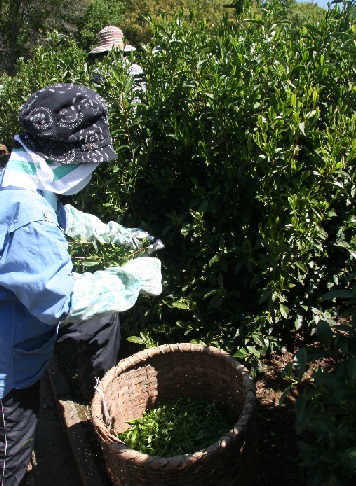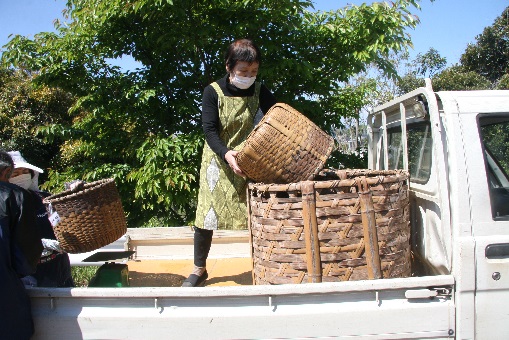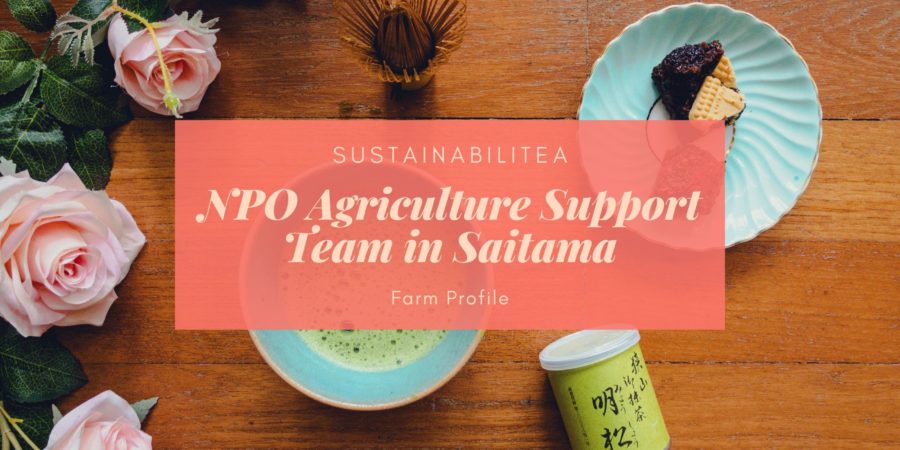Hi friends! For the second post in this sustainabiliTEA series, we’ll be taking a look at not one, but a group of tea farmers in Saitama! These farmers have banded together under the non-profit organisation NPO Agriculture Support Team in Saitama (Japanese name: NPO法人 埼玉農業おうえんしたい) and they are doing some pretty cool stuff!
What is Sayama Tea?

Sayama tea refers to tea that comes from Saitama Prefecture in Japan. Although Sayama only produces 2% of the tea grown in Japan, it’s one of the three famous tea regions within Japan. Like the Meiji-era saying says:
色は静岡、香りは宇治よ、味は狭山でとどめさす (iro wa shizuoka, kaori wa ujiyo, aji wa sayama de todomesasu /For colour, Shizuoka; for fragrance, Uji; for taste, Sayama.)
In Sayama, the NPO Agriculture Support Team in Saitama works to raise the profile of Sayama teas by producing Single Origin Teas.
For a bit more on Sayama tea, check out this introductory post.
Why would farmers band together?
The aim of NPO Agriculture Support Team in Saitama is to encourage farmers to grow diverse tea cultivars and band together to sell their products.
Why should farmers grow different cultivars? Because when it comes to Japanese tea, about 77% of tea plants are from the Yabukita variety, which means many farms practice monoculture farming. One danger of this is that changes in weather can devastate entire crops. Another downside of monoculture farming is that all the tea plants will mature at the same time, which means that in a rush to harvest tea, farms working with limited labour resources would end up working for too long, which could lead to danger to the workers. Growing different cultivars that mature at different speeds is a way of hedging against natural disasters and helping to spread out the workload.
What makes single-origin teas special?
Did you know that depending on cultivar and farm location, the same type of tea can have a variety of different notes? Many tea brands in Japan choose to blend their teas for consistency of flavour, but if you’re looking to explore teas in-depth, drinking a tea made from one single cultivar and grown in one farm is a great way to get to know the cultivar deeply. I remember being amazed at how sencha could, depending on the cultivar, taste floral, umami, grassy, etc. You can see how different each single origin tea tastes from these reviews.
Even if you’re like me and not naturally the best at differentiating between teas, you can definitely taste the difference between the various cultivars. And these differences are what led to the rise of tea games like toucha.
If you’re curious about toucha, I’ve written an article on it for the JR Cafe Singapore website (this link leads away from the blog) and if you want to read about tea competitions in general, I’ve also got a post about that.
Planet: NPO Agriculture Support Team in Saitama and the environment

As a collection of farmers, the farming methods practiced do vary. Some farms are certified organic, while others still use artificial fertilisers and pesticides, as that increases the amount of umami in a tea.
However, while there is no organic requirement to join the NPO, they are working with farmers to reduce the amount of fertiliser and pesticides used. For example, Hiraokaen is working towards “circular agriculture (循環農業)”, and they have started by composting leaves from a forest near them to replace some of the fertilisers traditionally used. They are also using methods like the Hamakikon Rope (ハマキコンロープ) to reduce the amount of pesticides used. Their efforts are paying off because since the NPO started, the amount of fertilisers and pesticides used by farmers in this organisation has fallen to less than one-twentieth of the amount used by the average tea farm in Japan.
By the way, if you’re specifically looking for organic tea from Sayama, Masuoka-en is certified organic! I’ve tried their Musashi-kaori and really liked its sweet, grassy notes.
People: NPO Agriculture Support Team in Saitama and their Community
Iruma City, the main production area of Sayama tea within Saitama, focuses so much on tea farming that if anything were to happen to the tea fields, the livelihood of roughly 5000 people would be affected. This is probably why some of the farmers have started to band together – raising the profile of Sayama tea overseas benefits all of them, and cultivating different varieties and practising environmentally friendly farming techniques would also be helpful to the community as a whole.
When it comes to labour on these farms, I learnt that most of these family farms depend on all members of their family working together, and tea farming techniques tend to be handed down from one generation to another. One such example is Onishi Tea Farm, where the current head learnt his tea-making skills from his grandfather since he was a child.
However, because these farms are family farms, the issue of succession is becoming a problem. Tea farming is not a very attractive industry, and there are many children who don’t want to be tea farmers, leading to farms lying in disuse. This is a pretty big issue for the NPO and one that they’re planning to tackle as well.
Where To Find Single Origin Sayama Tea
If you’re interested in trying some of NPO Agriculture Support Team in Saitama’s teas, the easiest way is to buy them from their online shop here. Their English website also has a lot of information about them and their teas, and it’s something you may be interested in checking out.
If you’re in France, there’s a shop in Paris called Bows & Arrows which stock their teas! They also have an e-shop if you’re in France but not in Paris (basically, me).
Finally, if you’re interested in hearing from the farmers in the NPO, I’ve embedded a youtube video created by the NPO! The video is slightly over 13 minutes, but you get to see the farms and hear from the farmers themselves, and I think that’s an excellent way of getting to know a bit more about the region and their teas!
Concluding Thoughts
Writing this article was a very interesting experience for me because the concerns of Hachimanjyu Tea Farm and the farms in the NPO Agriculture Support Team in Saitama are so different. I think this profile is a great example of how and why farmers would band together, and how sustainability is a journey and not just something that happens overnight. And as you’ve seen last year, I had a great time drinking all the Single Origin senchas from Sayama so if Japanese tea is something you’re interested in, I would definitely encourage you to try the teas from any of the farms here (and from Hachimanjyu as well!)
P.s. The featured image is of a matcha that they produce and I really like it! It’s not bitter at all (rather, there’s a toasted seaweed note) and I think it’s great for people who are used to Japanese sencha and want to get into matcha.

I love these posts you’re doing about sustainability!
Thank you! Glad you’re enjoying them!